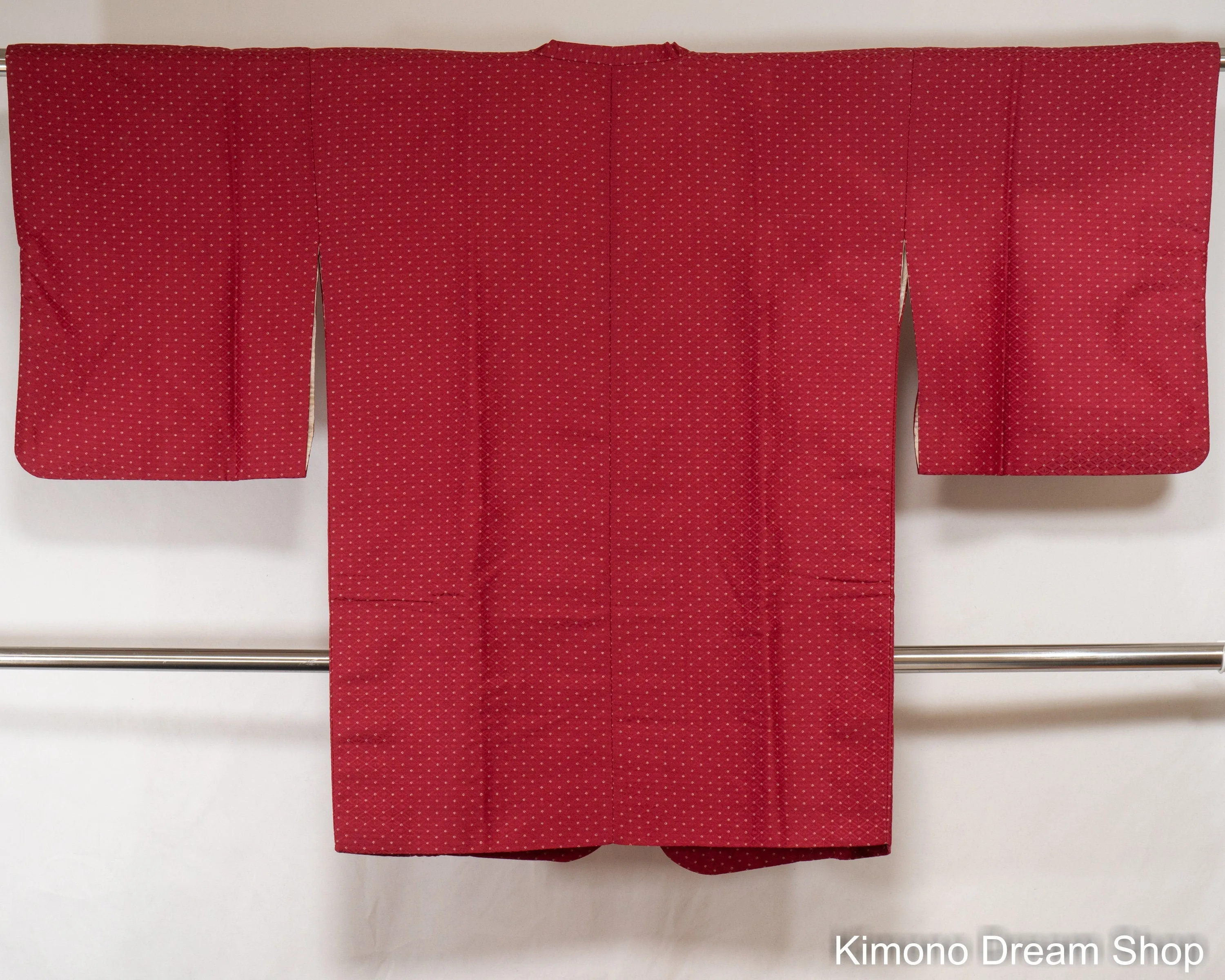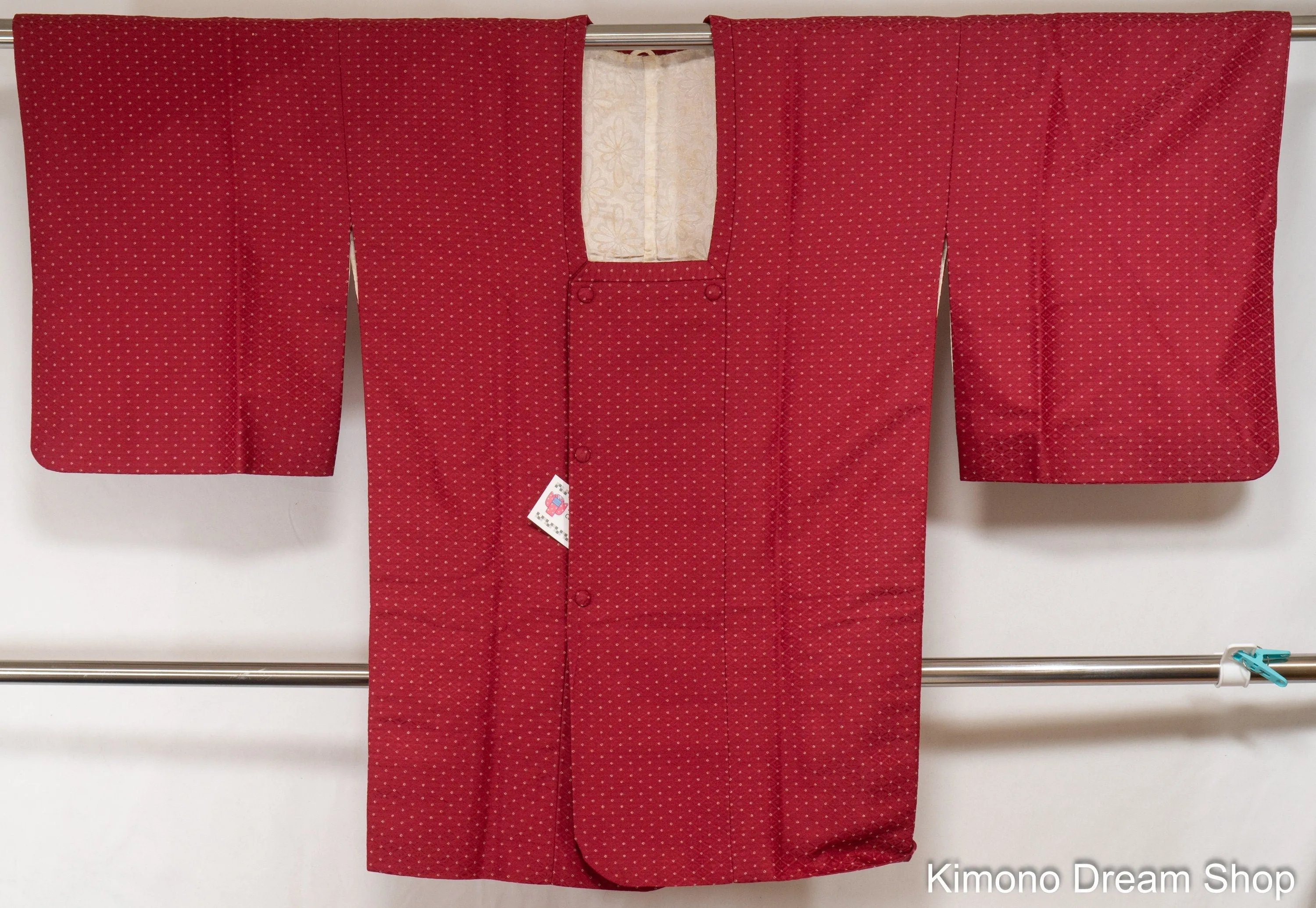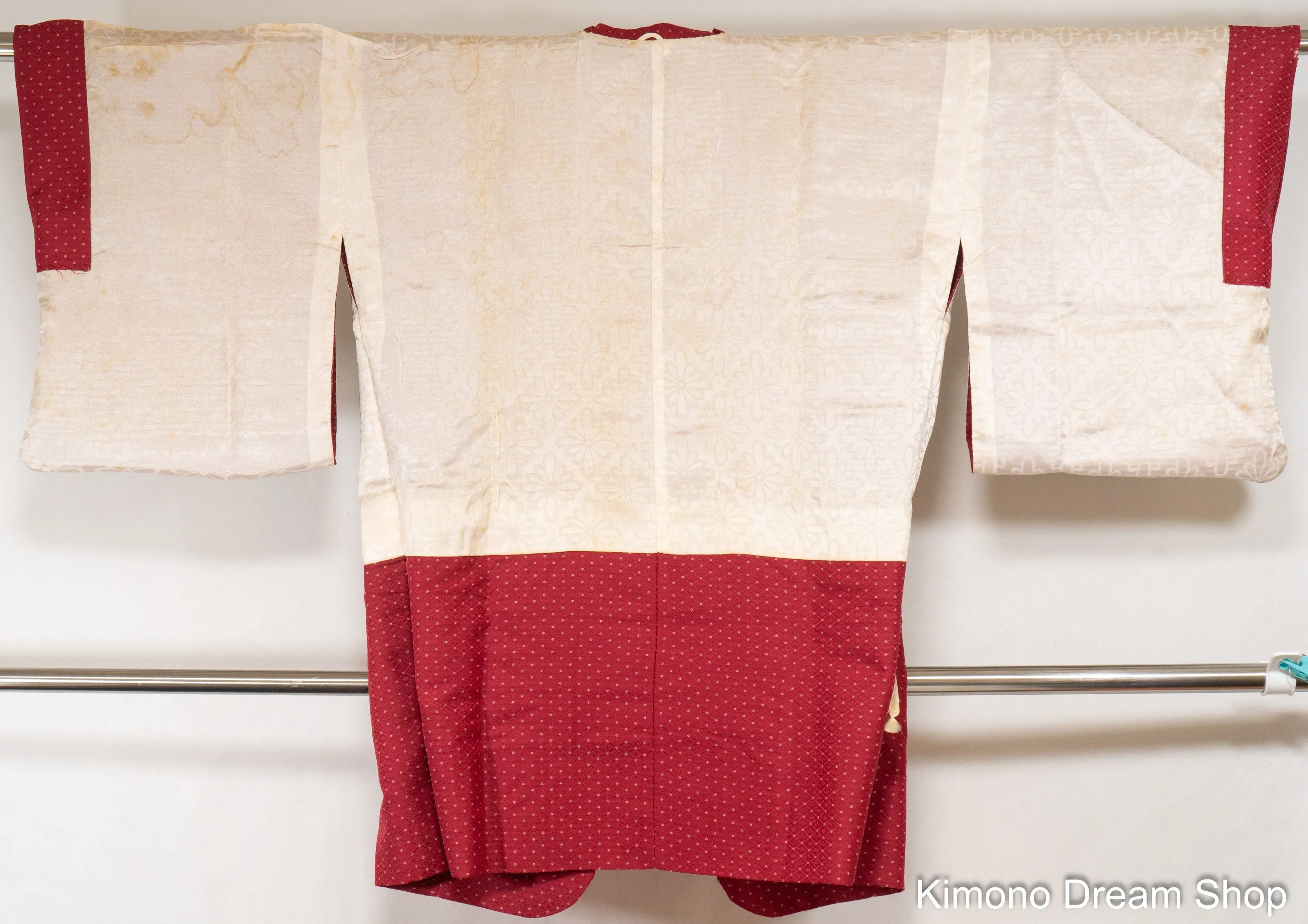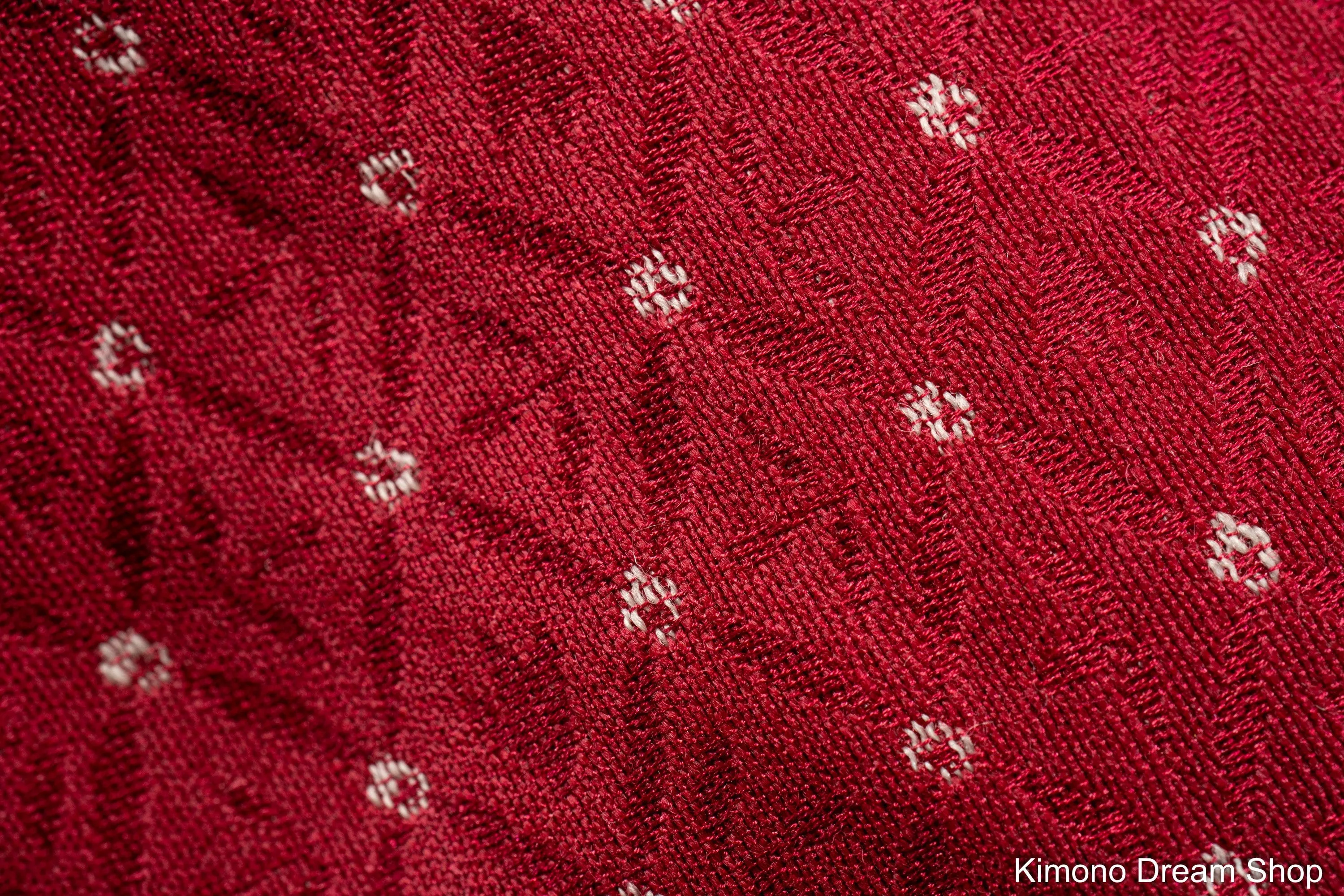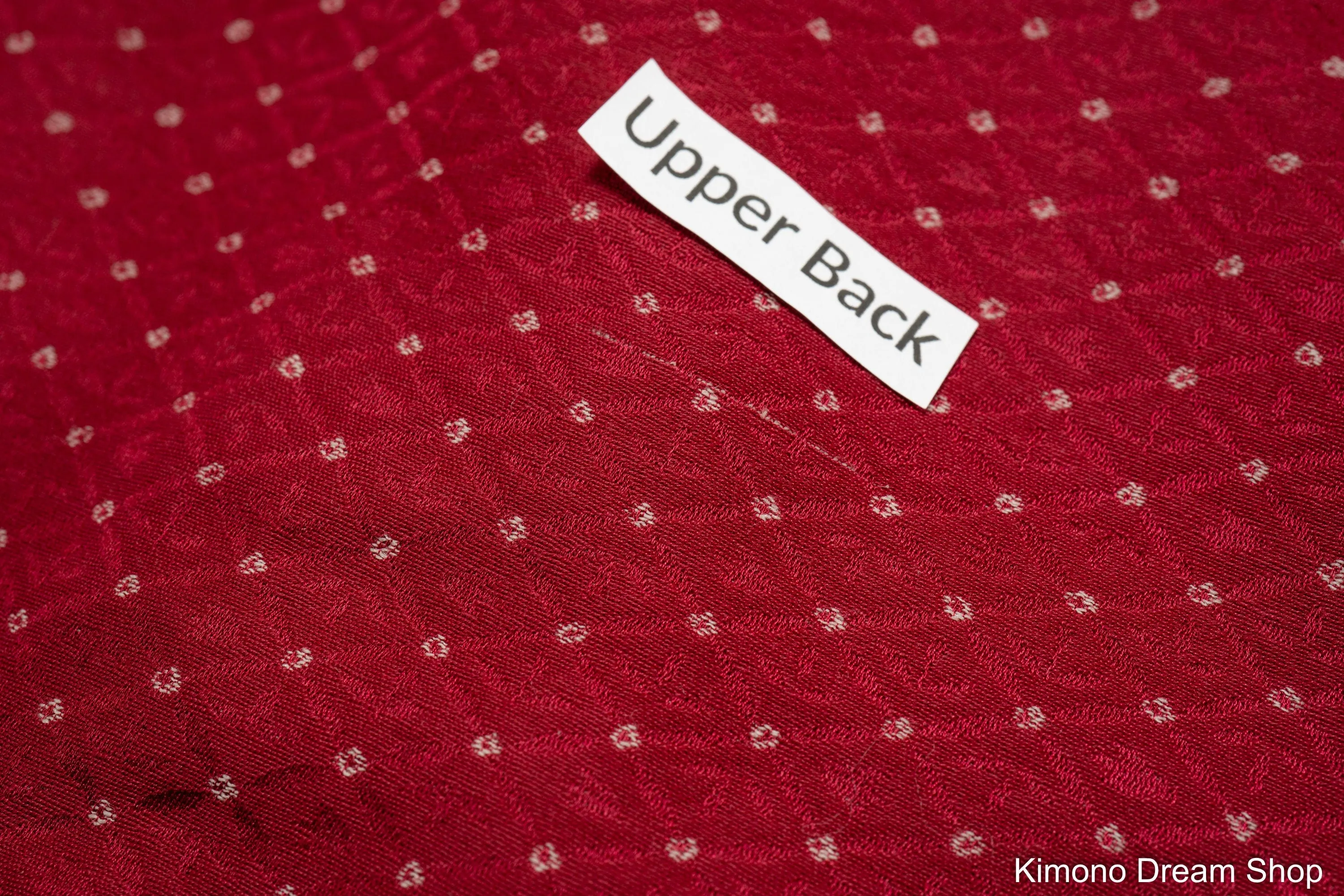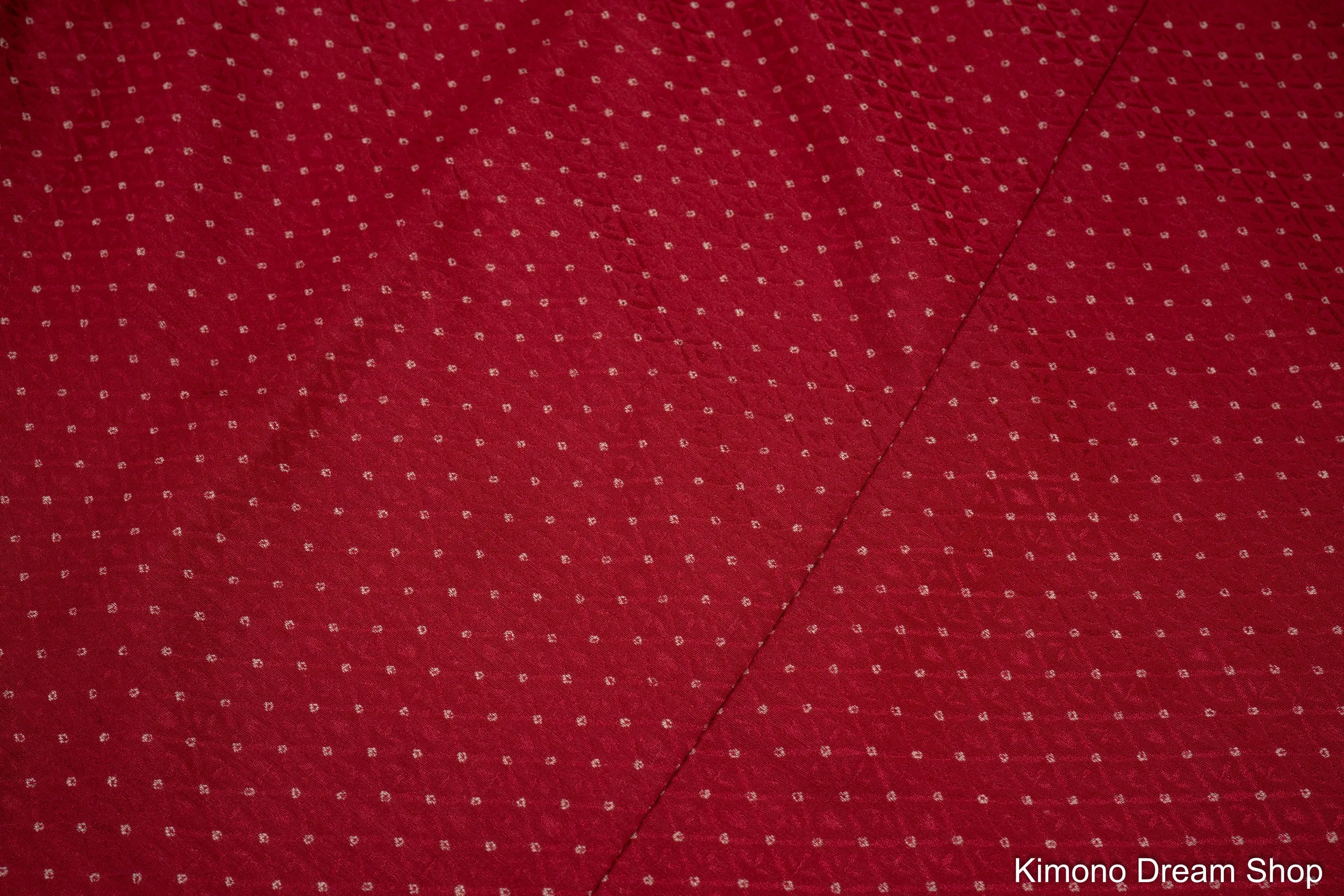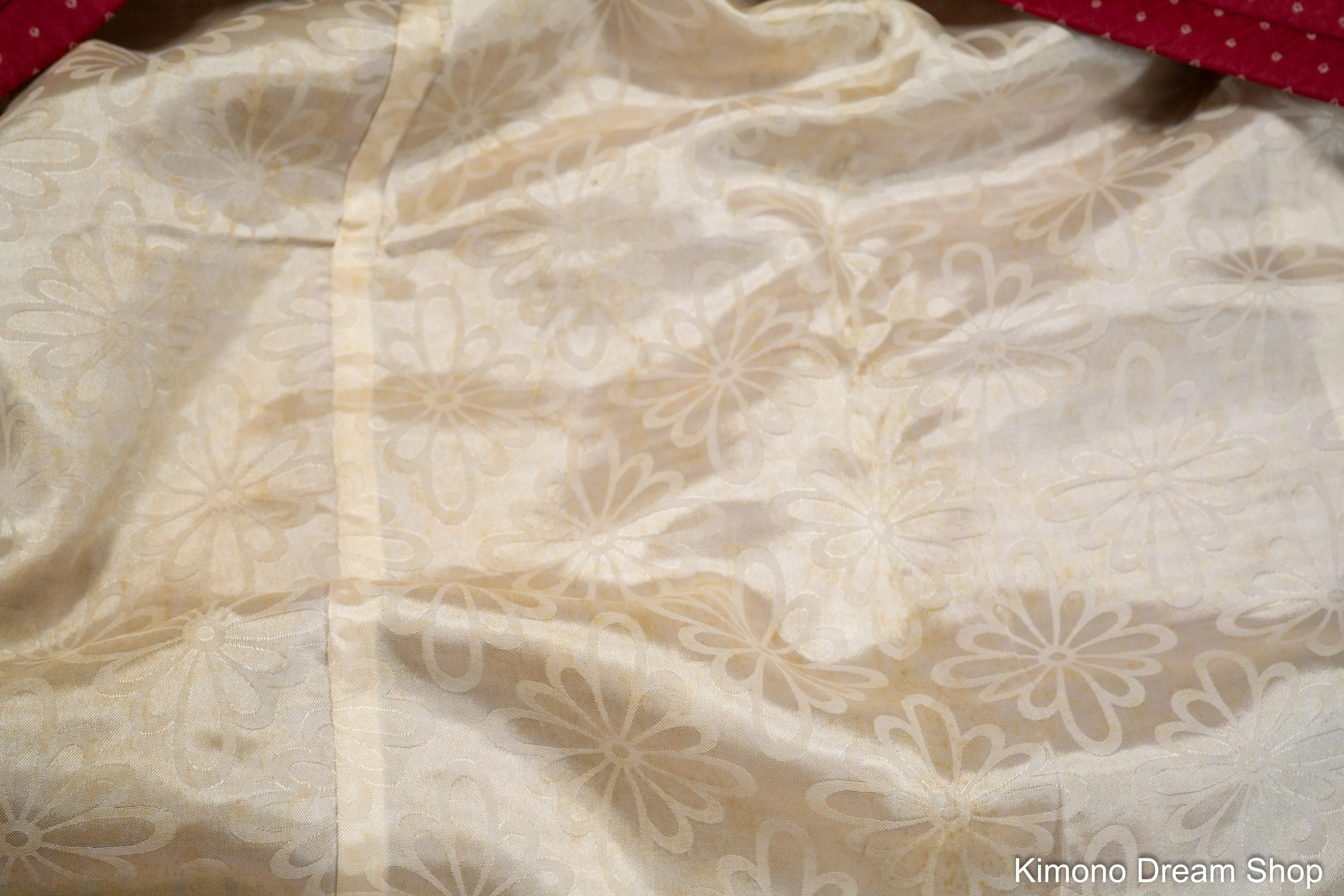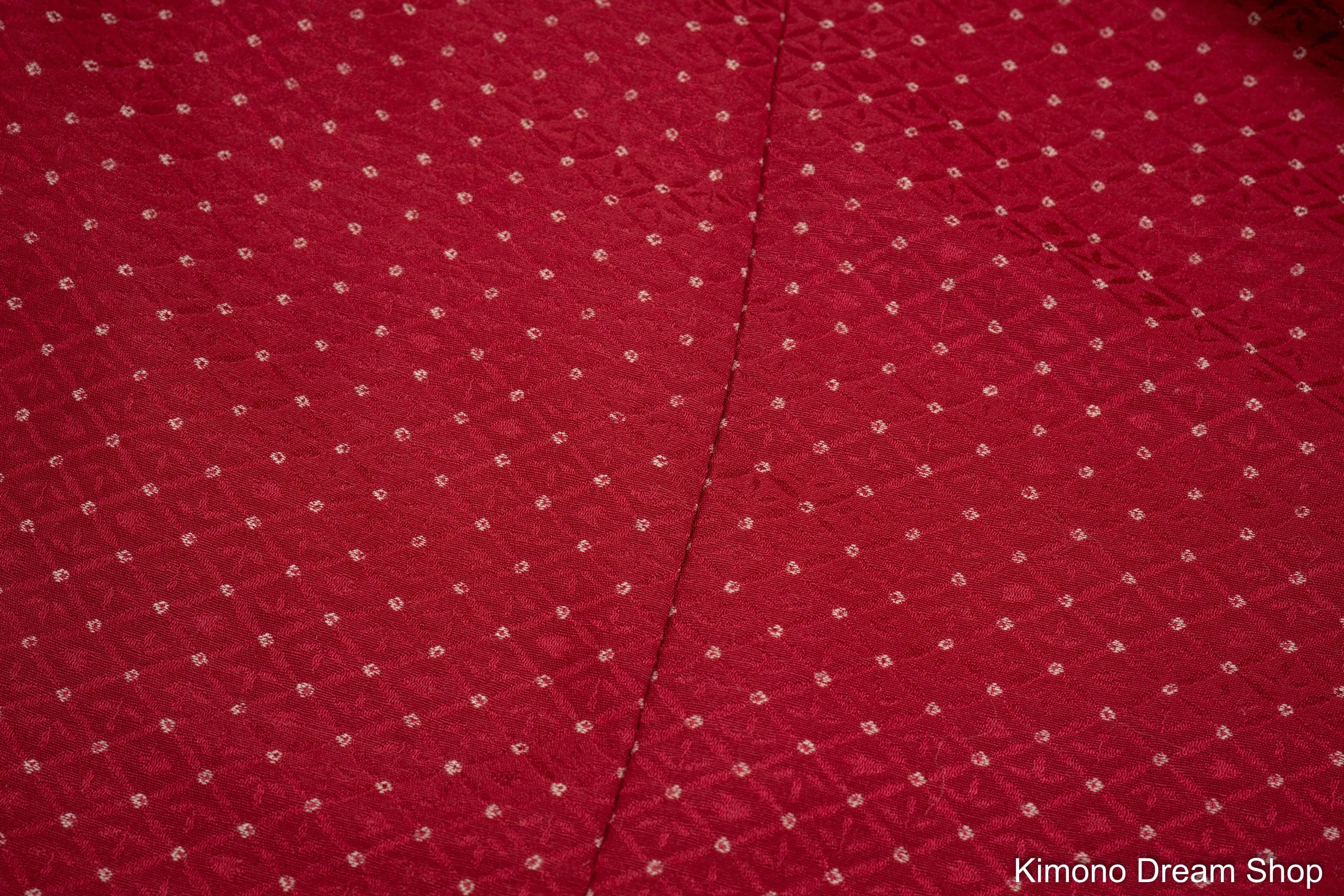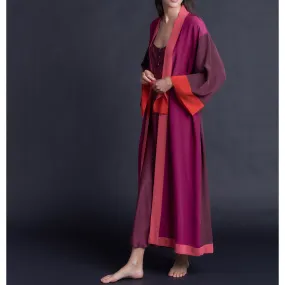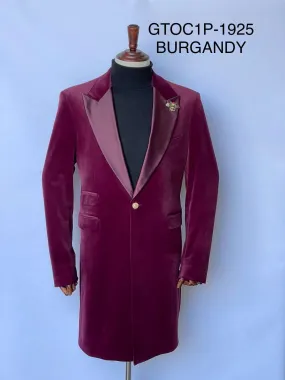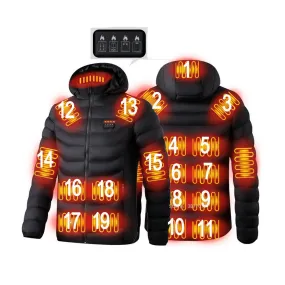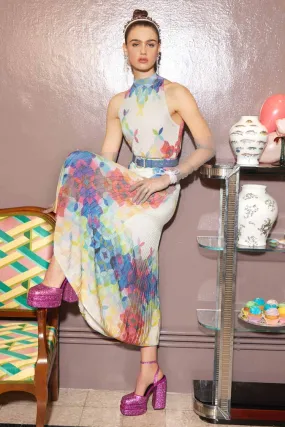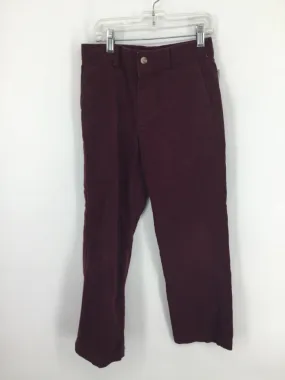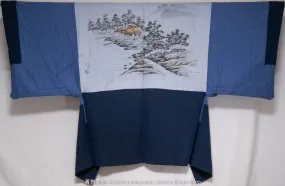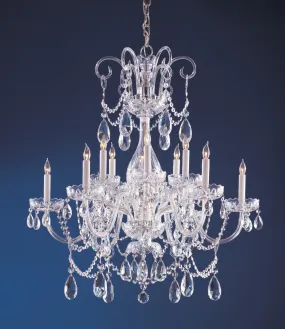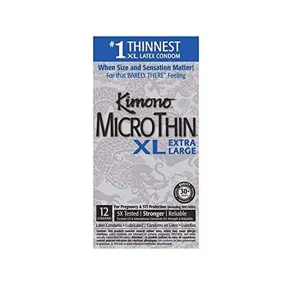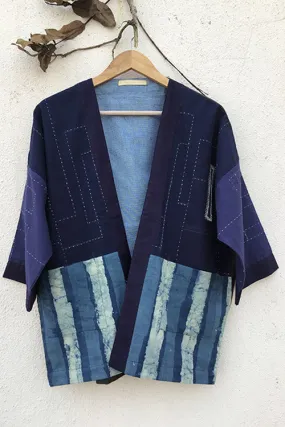The white kanoko-style spots were made by weaving white thread above the red thread. This isn't embroidery or dyeing. Creating simple patterns like this by weaving is quite rare.
This haori includes one pair of himo ties. Pay $5 for an additional random pair of himo ties or $8 for an additional pair of unused himo ties.
Look at the very bottom of the description to see details on the patterns in this kimono.
Width: 129cm (50.5")
Length: 85cm (33.5")
Sleeves (top to bottom): 46cm (18")
Armpit to Armpit (back): 61cm (24")
Chest (along the back fold, except collar): 112cm (44")
Age:
1960s
Fabric Quality:
Silk, lightly textured, slightly firm
D - Hole in the lower back. Due to a manufacturing error, a white thread is visible on the upper back. This michiyuki would be A rank if it wasn't for the hole. (Outside)
See photos for fabric quality of the lining. Significant age staining on the lining.
Cleaning:
Dry Clean Only!
Air outside on a dry day a couple times a year.
Quality Rank (Outer Fabric):
S = Near Mint Condition, No signs of aging, staining, or wear.
A = A very small amount of staining or aging can be seen, such as one or two age spots.
B = Signs of use and a few small stains or many tiny stains (such as dots from aging).
C = Stains are easy to spot, large, and/or numerous, and may contrast heavily with the fabric.
D = Holes or very large stains. Significant signs of aging and use may also be seen.
E = Salvage only.
14
Patterns:
Diamonds, Hishi, 菱
This is an interesting pattern, as it is said to originate in the shape of the leaf or fruit of the trapa japonica flerow, or a type of Japanese water chestnut, and not of diamonds that are formed within the Earth. There isn’t a specific meaning of the diamond pattern, so it is generally used and remixed in many more ways than other traditional patterns.
12




